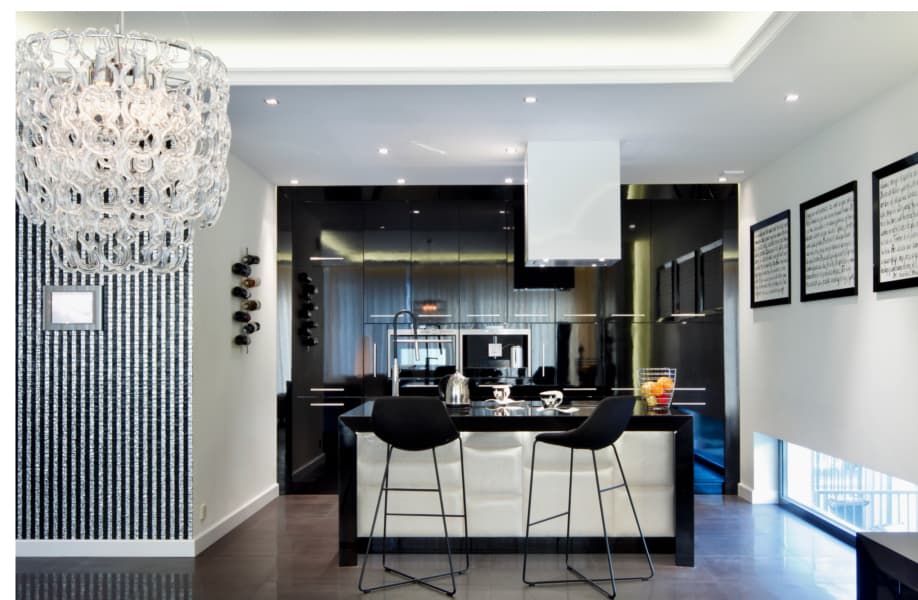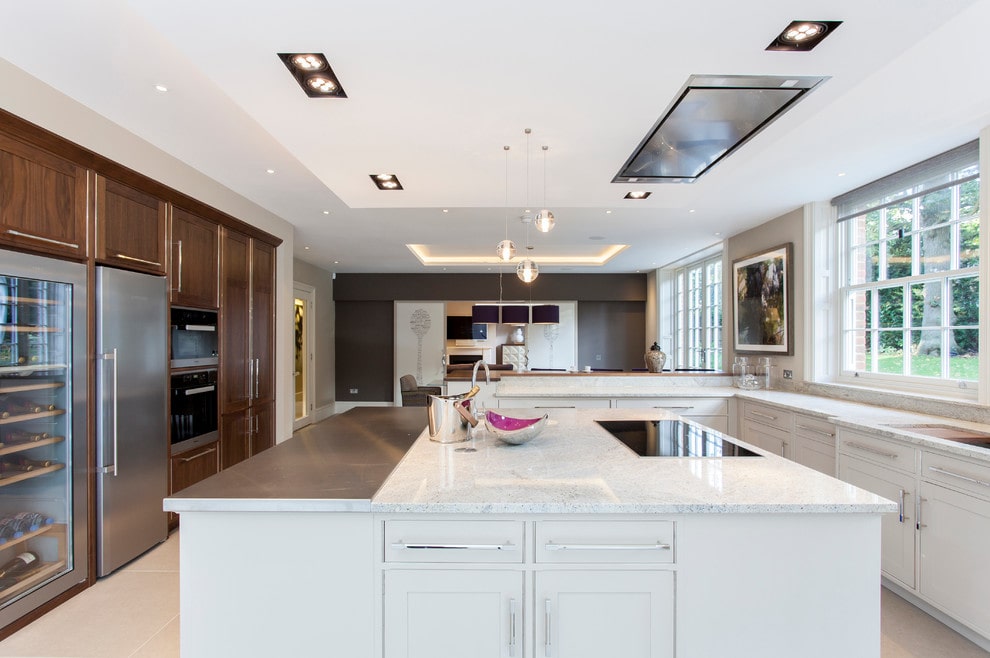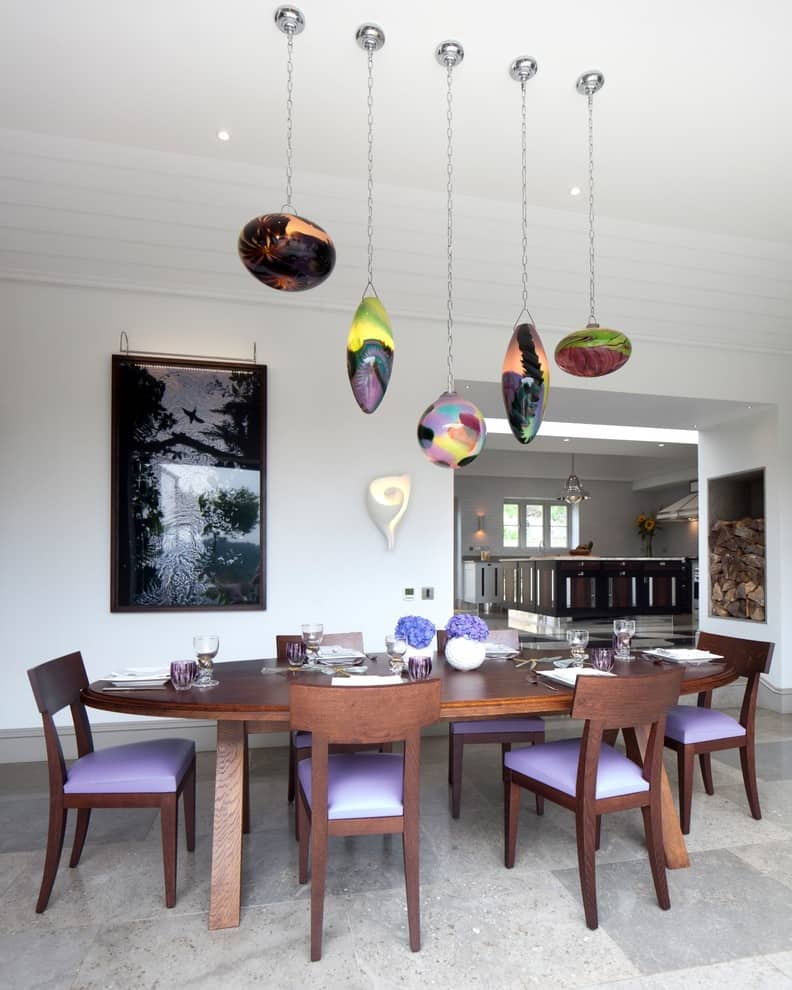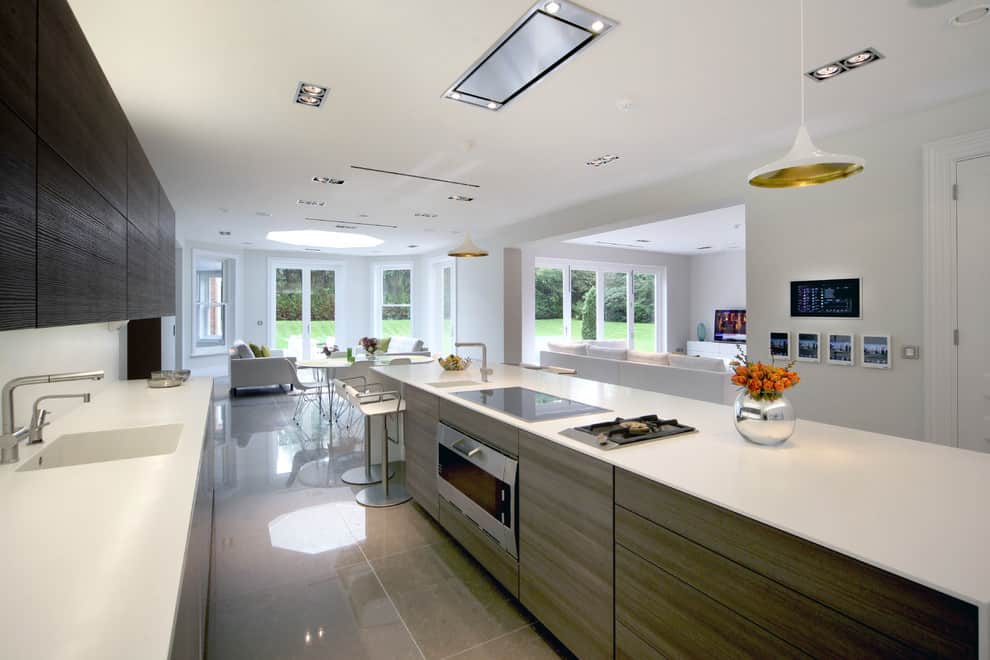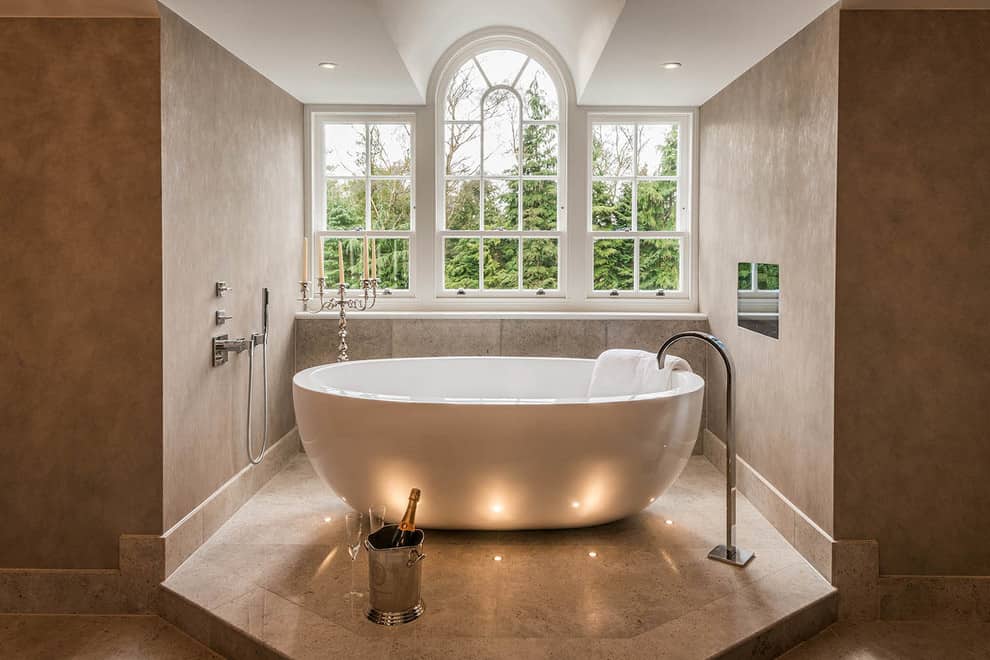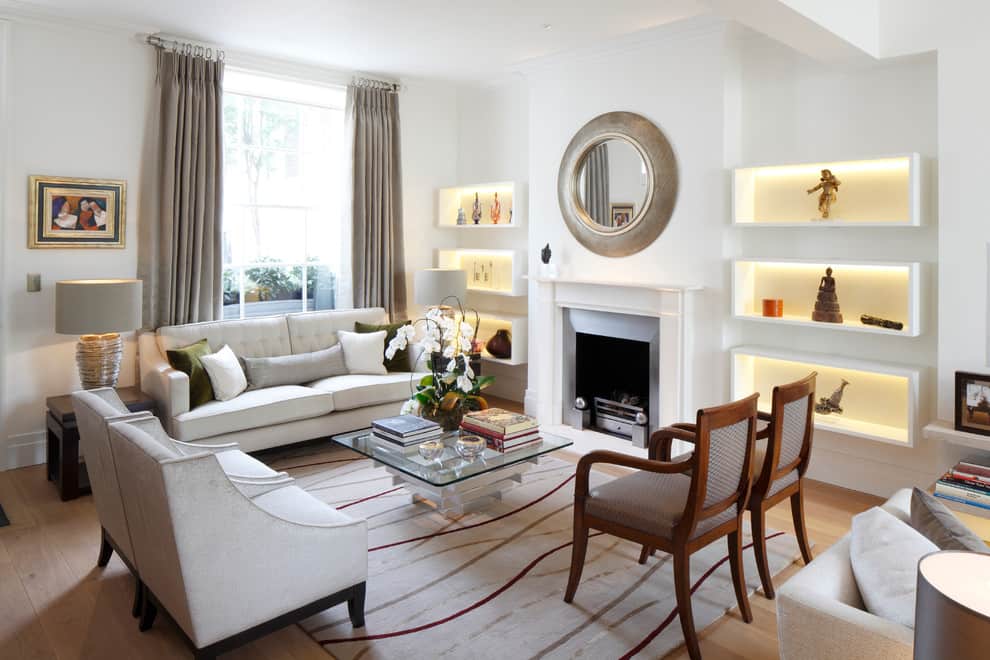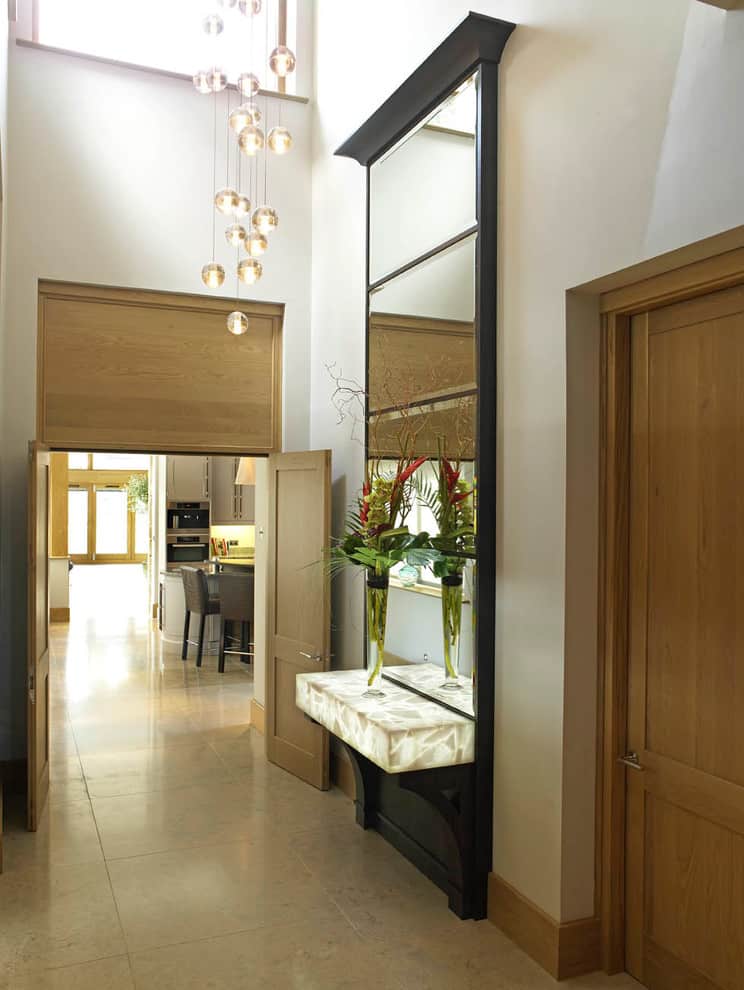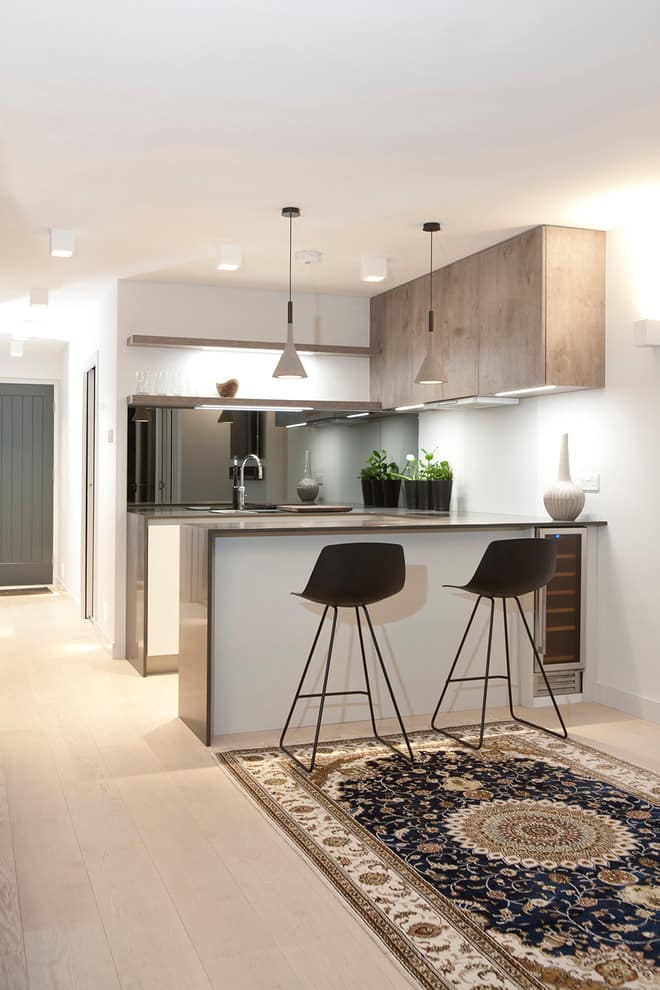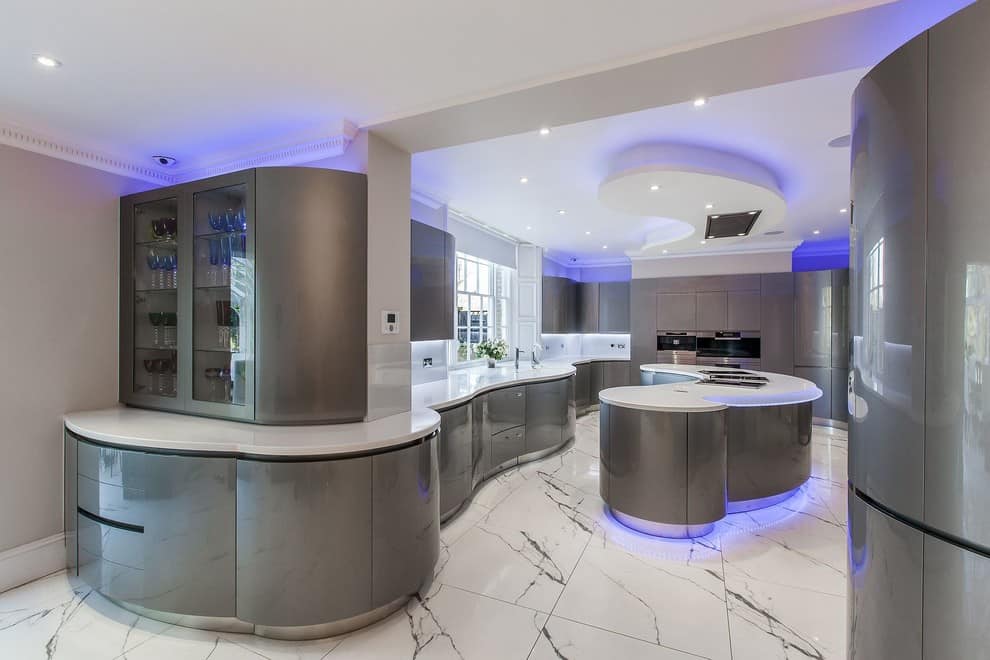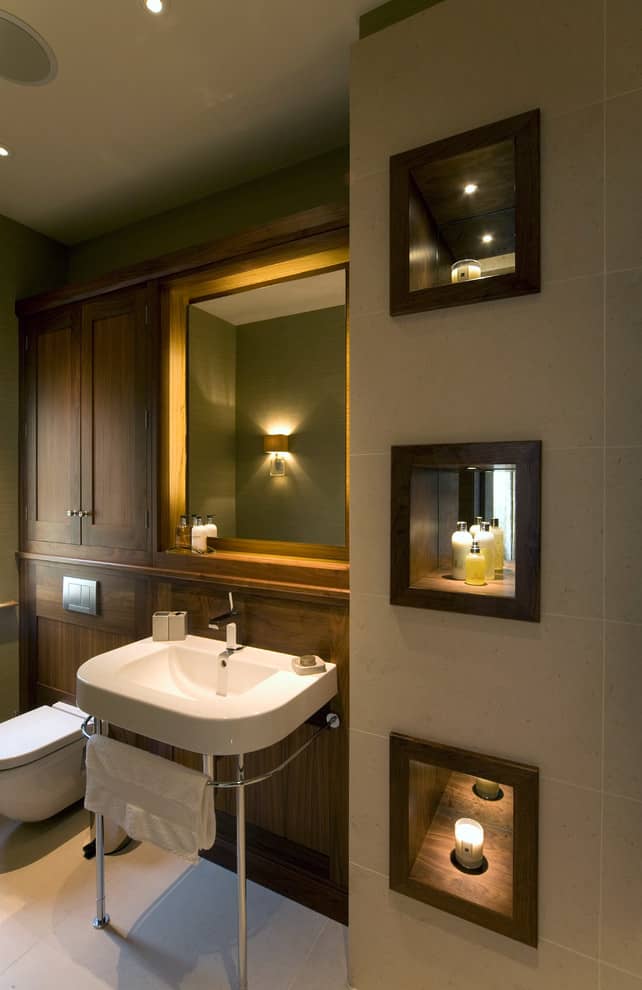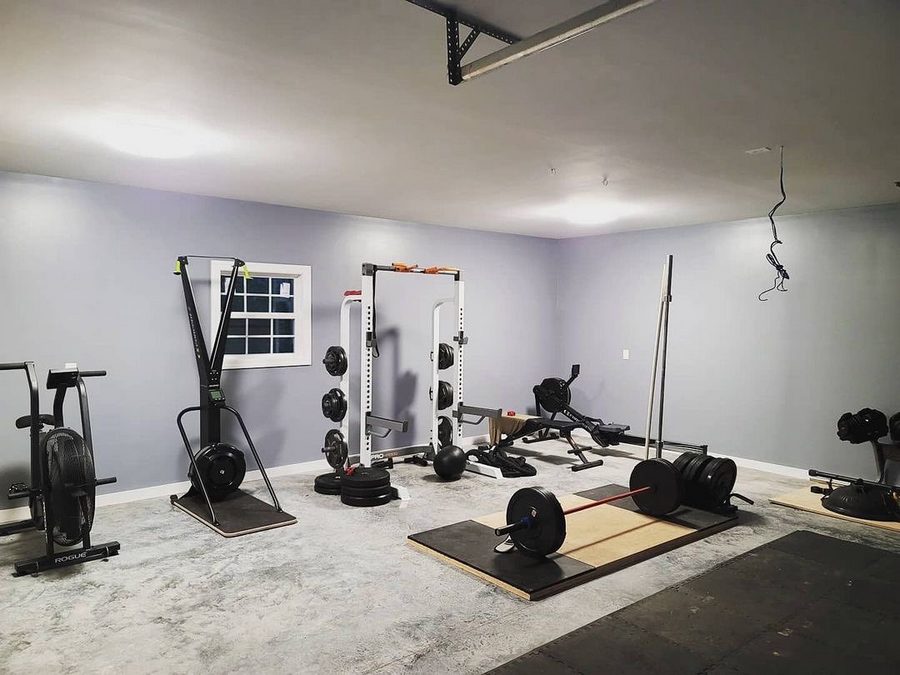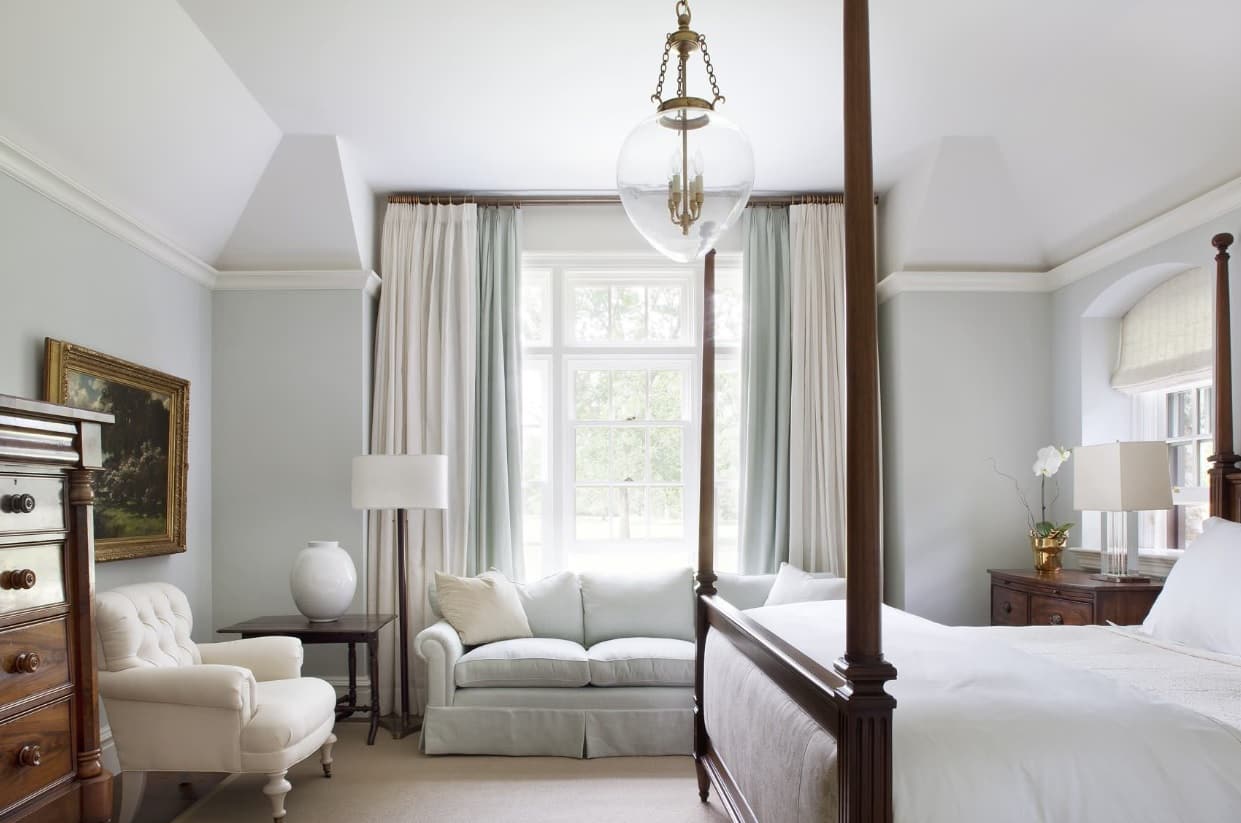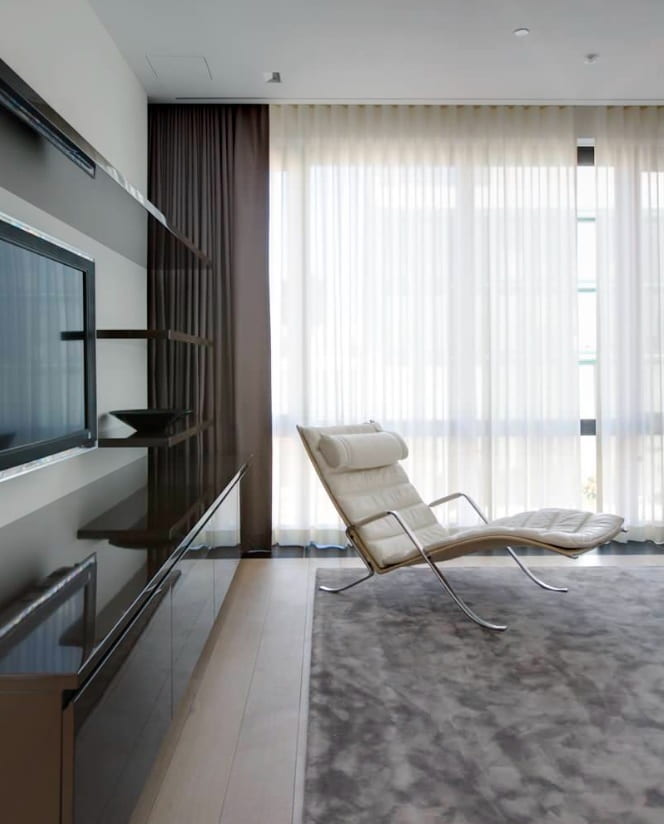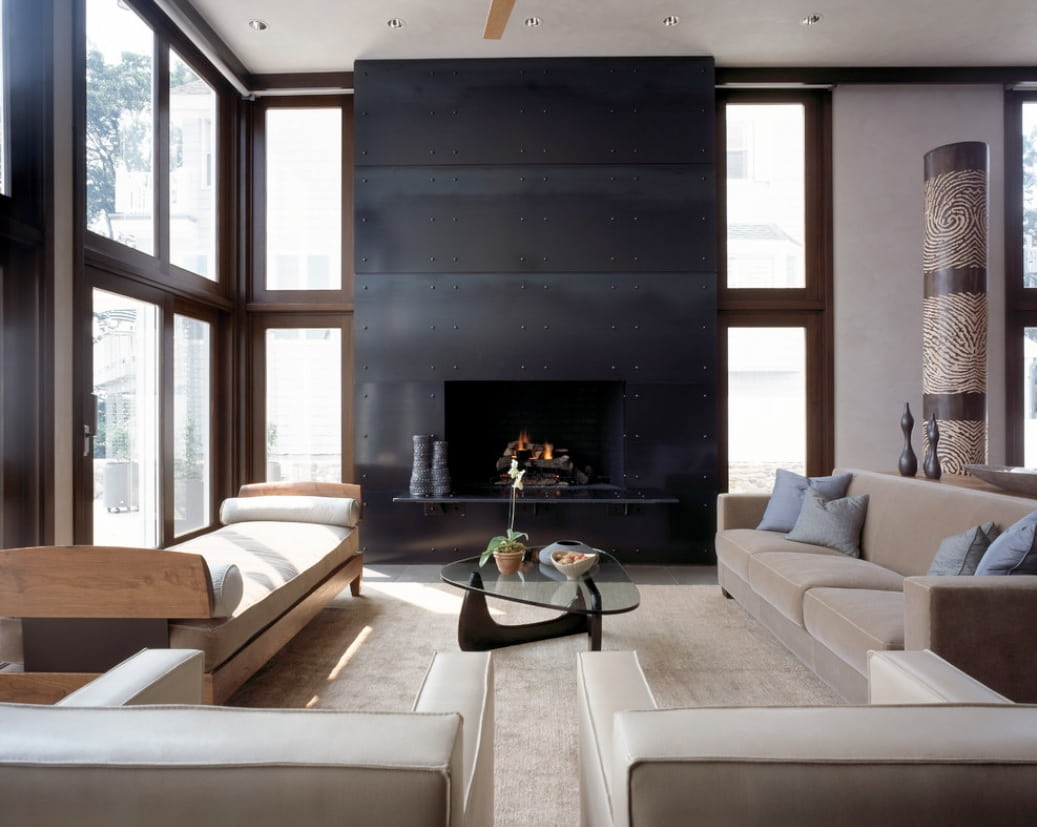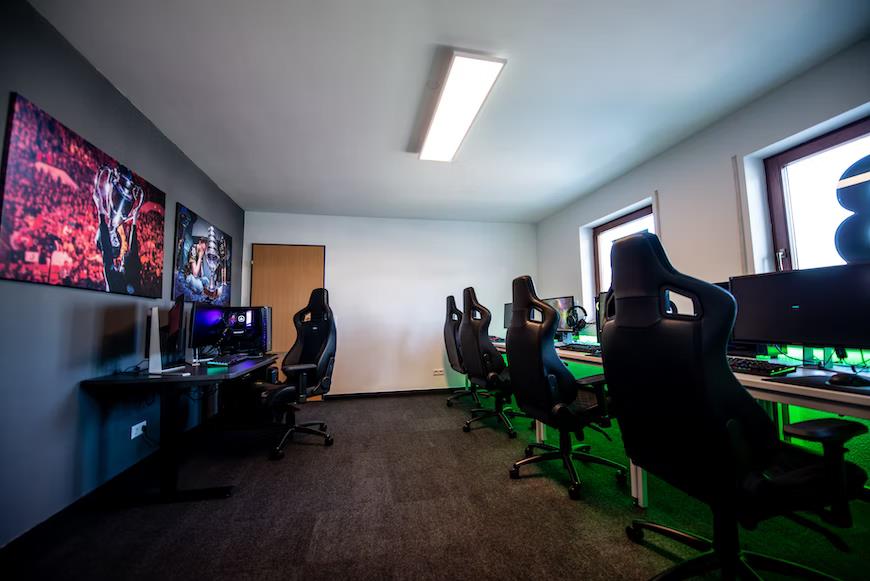We often hear about trendy multi-level lighting, but what is it really? We are talking about the use of diverse light sources, which ensures maximum efficiency of the entire system.
For example, the main task of diffused lighting is to create conditions for good visibility in the working area. At the same time, light accents add drama and intrigue to the room. Let’s take a look at a few examples of organizing a tiered lighting system to see how it can work for you.
Use Multiple Light Sources to Divide a Single Space into Visual Zones
An open-plan kitchen integrates a cooking and dining area, and the right lighting can highlight this symbiosis. The sophisticated system, as we can see, includes high power lights mounted above the work area and smaller recessed fixtures for more diffused light. In fact, it is better to use the services of a professional than to undertake the implementation of such a complex project as lighting a multifunctional space on your own.
Let Different Lighting Fixtures Perform Different Functions
With high-power central lighting in a dining area, decorative lighting does not have to be bright in order to function. The devices should not work with the same power. Otherwise, you will not be able to focus on certain objects.
The interesting design looks amazing in the daytime while still providing soft, subtle lighting in the evening.
Make a Lighting Plan
Complex design lighting systems can be luxurious and interesting. This example helps you avoid common pitfalls when planning an appropriate scheme. An ill-conceived placement of devices can destroy the idea of design and deprive a room of individuality since in this case every corner of the space is illuminated too intrusively.
The perception of the image of space can be adjusted by increasing or decreasing the intensity of illumination in certain areas. It is worth grouping devices into small schemes to provide yourself with the freedom to maneuver. Keep in mind that you can always install additional lights at the same level, but you will not be able to combine 20 or 30 wired fixtures into one circuit!
This picture shows what a well thought out lighting plan might look like.
Soften the Lines of the Bathroom with Accent Lighting
Designing a bathroom lighting system is one of the most challenging tasks for professionals. Ideally, it should be organized so that you can control the light intensity and color temperature of the LED lighting throughout the day. In the morning, cool light is preferable, allowing you to wake up faster, while in the evening, warm light is more appropriate to prepare you for sleep.
LED lamps are available with a specific color temperature, but you can still create multi-level lighting if you use different schemes for different functions. For a comfortable shaving and makeup, the bright vanity lighting can be combined with accent floor lighting designed to be used as the main light source at night. The main thing is to correctly divide the lighting schemes in order to be able to enjoy all the advantages of modern devices.
Highlight the Personal Characteristics of Your Home
Accent lighting is organized in order to highlight those specific items that seem the most attractive to owners or designers in the interior. The appliances themselves can be completely hidden and thereby focus all attention on the selected object.
LEDs provide excellent opportunities for accent lighting, with surprisingly compact fixtures (wall, floor, ceiling and linear) suitable for installation in the most difficult to reach places.
Create a Mysterious Look with Low Hanging Lamps
The long suspended structure, combined with the illuminated onyx table, allows two different and seemingly incompatible effects to be achieved in this high-ceilinged hallway. Essentially dissimilar light sources cover two planes, which gives a mysterious look to the space. At the same time, the suspended composition emphasizes the original architecture of the room, and the spherical shades add variety to the interior, which is dominated by elements with rectangular outlines.
Such a combination will look advantageous at any time of the day.
Matching Color Tone
The use of multiple light sources makes it possible to unify the space more efficiently than is possible with uniform luminaires. When choosing several types of devices, you need to keep in mind that the slightest differences in luminescence temperature will not go unnoticed.
Before installing the system, make sure that the color tones of different lighting fixtures are compatible. Such foresight will create a harmonious atmosphere in the room, as the design of the kitchen presented below, with invigorating lighting provided by cold-light lamps.
Create Color Message
Colored lamps on a separate scheme can be used to transform a utilitarian kitchen workspace into an entertainment area when needed. Tint-changing LED designs and progressive automatic control systems offer more options for adding drama to the interior through emitting color.
Accentuate an Interesting Ceiling with a Wall Lamp
The combination of miniature floor lamps with more traditional wall fixtures accentuates the striking architecture of domed and vaulted ceilings. This way of design was chosen by owners of the house in Yorkshire who decorated it in Arts and Crafts style.
The combination of these lighting schemes makes you slowly look up, which allows you to showcase the beauty of the ceiling. The door at the end of the corridor serves the same purpose.
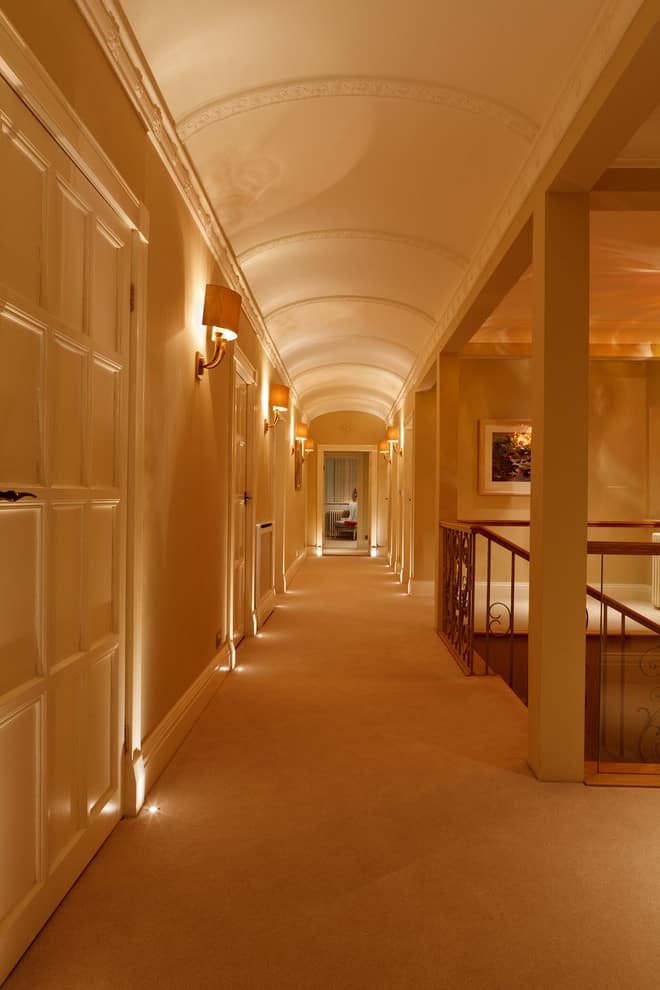
Multi-level illumination, organized using wall lamps and LED floor lamps, gives the space additional volume
Layered Scheme: Diffuse and Directional Lighting for Maximum Effect
This bathroom visualizes several lighting functions at once. The luminaire provides good visibility in the work area. Decorative patterns soften the interior by emitting diffused light.
The light above the sink provides good visibility for comfortable makeup and shaving. There are also mirrored niches, illuminated by miniature LEDs, to focus on decor items and add glamor to the interior.
Multi-level lighting is designed to serve different practical purposes and at the same time highlight the individuality of the interior. Do you think the possibilities of multi-level lighting are really as great as the designers claim? Share your thoughts in the comments.

